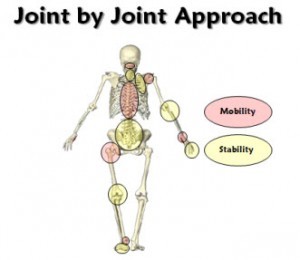Shoulder Solution Seminar - Recap
Last week we hosted the Shoulder Solution Seminar. Coach Graeme did a great job identifying what accounts for many shoulder problems as well as some solutions to help this joint move and feel better.
The first thing Graeme shared is that most shoulder problems related to issues of going overhead. Not many people complain of issues when their arms hang by the side. But as soon as you start reaching overhead, things change. And when consider many of the athletes that suffer from shoulder issues i.e. swimmers, throwers, tennis and volleyball players need to go overhead in their sport.
So why do we have problems going overhead? Or what contributes to the various shoulder issues we face? Graeme broke this down to five main causes.
- Mobility versus Stability - If you start at the ground and go up, the body is a series of alternating joints of mobility and stability. In other words, the foot is our stable joint and the ankle is a joint of high mobility. After that the joints go in the following: knee (stability), hip (mobility), lumbar (stability), thoracic (mobility) and shoulder (stability). The image below shows this arrangement.
[caption id="attachment_5250" align="aligncenter" width="300"] The body as a series of alternating segments of stability and mobility.
Where we can get into trouble, and shoulder issues, is when we the roles of the joints can get reversed. For example, too much sitting can lead to tight hips and then we may try and move the low back leading to injury.
- Overpowered - There are a number of muscles which contribute to healthy shoulder movement and function. And sometimes we see muscles do too much of the work and others doing their fair share. The traps is a common culprit in this scenario. Do to working at computer screens, sitting at desks and stress in general we tend to have over-active upper traps. And on the flip side the lower traps are under utilized and get overpowered by the upper traps. You will recognize this because it looks like someone is shrugging their shoulders in the 'I don't know look?'
- No Margin for Error - One of the other reasons for shoulder issues is that we're trying to get things moving in an area where there isn't a lot of space. This is known as the sub-acromial space and is depicted by the image below.
 Since the space for movement to occur is small the margin for error is also small.
Since the space for movement to occur is small the margin for error is also small. - Different Types - News flash...we are all different. Ok so obviously this isn't much of a major announcement but it can get overlooked in programming. There are different types of shoulder types with varying amounts of room in the sub-acromial space. For some people, with less sub-acromial space than others, it may make sense to lay off the overhead pressing movements.
- Start in the Right Place - Before you get to adding in kind of stretches, mobility drills or shoulder exercises you to ensure the posture and alignment are optimal. And in order to do this there's value in doing some assessments to set proper posture. One analogy Graeme made was to imagine holding a couple of flashlights by the side. Do the beams of light face forward or do they cross in front of the body. If they cross in front of the body, how close to the body do they cross? The closer to the body the more internally rotated the shoulders are.
- First we want to relax the over-active muscles. This could be the upper traps or the muscles the contribute to internal rotation.
- Next we want to increase the external range of motion of the shoulders.
- Once we've increased the range of the shoulders we can look to strengthen them.
- After this we want to strengthen some of the under utilized muscles such as the lower traps or serrates.
- Lastly we can look to increase mobility at the thoracic spine.
When you subscribe to the blog, we will send you an e-mail when there are new updates on the site so you wouldn't miss them.

Comments